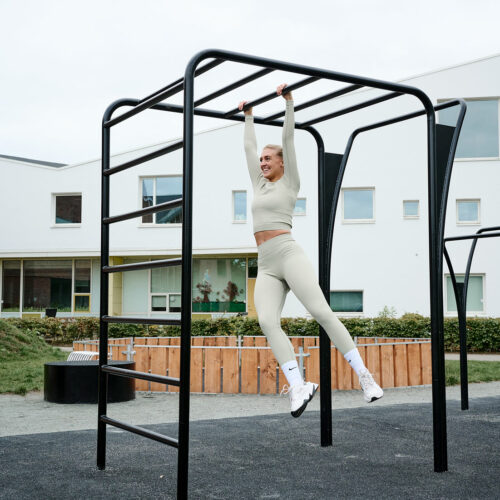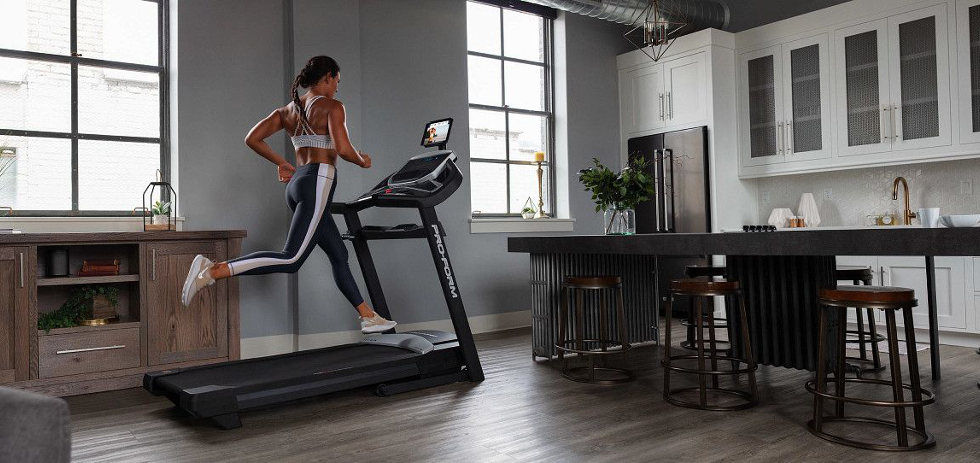OpenGL 3D for Lazarus IDE on Linux
provided by CodeTyphon
Garage Gym Setup Guide: Commercial-Grade Equipment
2025.09.24 03:47
For beginners over 40, prioritize gentle, joint-friendly gear. Begin with an elliptical trainer or recumbent bike for cardio, resistance bands for strength, and a yoga mat for mobility. Don't forget compression sleeves and rollers for recovery. Take a measured approach with weight progressio
Space planning requires exact dimension checks, including ceiling height, doorway dimensions, and available floor space. Many fitness enthusiasts find assistance from planning resources when planning their home gym layout. You'll need to account for equipment footprint both in use and at rest, especially for multi-use gear. Factor in extra clearance, typically 2-3 feet around each machine. Don't forget to consider protective mats, as some equipment may require extra protectio
 Lastly, confirm adherence to standards. Look for recognition from organizations like ASTM International or CE marking for European standards. Confirm that the equipment includes appropriate safety features such as emergency stop mechanisms for motorized machines and proper locking mechanisms for adjustable components. You should also check documentation and instructions. This supports proper and secure us
Lastly, confirm adherence to standards. Look for recognition from organizations like ASTM International or CE marking for European standards. Confirm that the equipment includes appropriate safety features such as emergency stop mechanisms for motorized machines and proper locking mechanisms for adjustable components. You should also check documentation and instructions. This supports proper and secure us
Build your home gym foundation with weights, bands, and kettlebells. Choose bands with varying tensions to accommodate different exercises. Invest in a vest with adjustable plates and secure straps for stability.
Consider your current strength and mobility when picking equipment. Opt for machines that provide cardiovascular benefit without high impact. Balance trainers, such as stability balls and wobble boards, improve core strength and coordinatio
Ongoing upkeep ensures reliable performance. Inspect all moving components and fasteners. Keep detailed maintenance logs and follow manufacturer guidelines for service intervals. This protects your home gym investmen
Converting your home into a pro-level home gym requires high-performance stations that maximize training potential and safety. When organizing your fitness space, you'll need to consider movement flow to utilize every square foot. Many pro machines are versatile and space-saving, helping you minimize clutter. Additionally, rubberized mechanisms in modern pro-level setups, such as magnetic resistance systems and noise-minimizing features, reduce operational nois
Summary
Follow these steps to set up a commercial-level garage gym. Garage gyms improve training consistency. Implement these steps to ensure safety, efficiency, and results. Leverage expert guidance to refine your setu
Before finalizing your purchase, review shipping and installation terms. Many online retailers offer white-glove delivery and assembly services, though these usually cost more. If you're planning to DIY setup, confirm that all necessary tools are included and that detailed assembly instructions are provided. You should also validate availability of installation hel
Design dedicated zones for weight training and cardio. Cardio area should include commercial-grade air bikes, rowers, and treadmills or ellipticals. Ensure higher weight capacities and longer warranties than residential model
Don't overlook the importance of commercial dumbbells and accessories. Professional weights reduce noise and damage. commercial lifting bars should allow smooth spins and high load capacity. Select resistance discs with secure collar
Prioritize safety protocols. Mount a first aid kit, consider security cameras, and maintain clear pathways. Add rubber-coated change plates and crash cushions for Olympic lifts. Regularly inspect and log equipment conditio
Can I Negotiate Prices When Buying Fitness Equipment From Specialty Stores?
Surprisingly, stores may cut prices if you ask! For the best deals, ask about multi-item bundles. Many stores also combine savings with accessory purchases. Additionally, target end-of-season reductions.
How Often Should I Replace My Fitness Gear to Maintain Optimal Performance?
Follow your replacement schedule for shoes, bands, and weights. Review strength and conditioning gear for optimal safety. Replace items showing damage or degradation.
A complete home gym requires equipment for both strength and conditioning. Begin with resistance bands and adjustable dumbbells for versatile strength training, then add a suspension trainer and pull-up bar for bodyweight exercises. Add cardio options for stamina and full-body fitness. Don't forget recovery tools like foam rollers and tracking devices.
Consider starting with multi-functional equipment with the best ROI. For beginners, strength and conditioning gear make an ideal beginner’s choice. Compact gear like mats and bands give you variety. As you build your collection, prioritize equipment that aligns with your specific fitness goals and current fitness level, rather than being swayed by unnecessary fitness gimmicks.
 Budget considerations should include additional expenses. You'll need to include ongoing maintenance. Think about purchasing essential maintenance tools and lubricants upfront to make sure proper equipment care. It's also wise to investigate replacement part availability and costs before committing to a particular brand or mode
Budget considerations should include additional expenses. You'll need to include ongoing maintenance. Think about purchasing essential maintenance tools and lubricants upfront to make sure proper equipment care. It's also wise to investigate replacement part availability and costs before committing to a particular brand or mode
Space planning requires exact dimension checks, including ceiling height, doorway dimensions, and available floor space. Many fitness enthusiasts find assistance from planning resources when planning their home gym layout. You'll need to account for equipment footprint both in use and at rest, especially for multi-use gear. Factor in extra clearance, typically 2-3 feet around each machine. Don't forget to consider protective mats, as some equipment may require extra protectio
 Lastly, confirm adherence to standards. Look for recognition from organizations like ASTM International or CE marking for European standards. Confirm that the equipment includes appropriate safety features such as emergency stop mechanisms for motorized machines and proper locking mechanisms for adjustable components. You should also check documentation and instructions. This supports proper and secure us
Lastly, confirm adherence to standards. Look for recognition from organizations like ASTM International or CE marking for European standards. Confirm that the equipment includes appropriate safety features such as emergency stop mechanisms for motorized machines and proper locking mechanisms for adjustable components. You should also check documentation and instructions. This supports proper and secure usBuild your home gym foundation with weights, bands, and kettlebells. Choose bands with varying tensions to accommodate different exercises. Invest in a vest with adjustable plates and secure straps for stability.
Consider your current strength and mobility when picking equipment. Opt for machines that provide cardiovascular benefit without high impact. Balance trainers, such as stability balls and wobble boards, improve core strength and coordinatio
Ongoing upkeep ensures reliable performance. Inspect all moving components and fasteners. Keep detailed maintenance logs and follow manufacturer guidelines for service intervals. This protects your home gym investmen
Converting your home into a pro-level home gym requires high-performance stations that maximize training potential and safety. When organizing your fitness space, you'll need to consider movement flow to utilize every square foot. Many pro machines are versatile and space-saving, helping you minimize clutter. Additionally, rubberized mechanisms in modern pro-level setups, such as magnetic resistance systems and noise-minimizing features, reduce operational nois
Summary
Follow these steps to set up a commercial-level garage gym. Garage gyms improve training consistency. Implement these steps to ensure safety, efficiency, and results. Leverage expert guidance to refine your setu
Before finalizing your purchase, review shipping and installation terms. Many online retailers offer white-glove delivery and assembly services, though these usually cost more. If you're planning to DIY setup, confirm that all necessary tools are included and that detailed assembly instructions are provided. You should also validate availability of installation hel
Design dedicated zones for weight training and cardio. Cardio area should include commercial-grade air bikes, rowers, and treadmills or ellipticals. Ensure higher weight capacities and longer warranties than residential model
Don't overlook the importance of commercial dumbbells and accessories. Professional weights reduce noise and damage. commercial lifting bars should allow smooth spins and high load capacity. Select resistance discs with secure collar
Prioritize safety protocols. Mount a first aid kit, consider security cameras, and maintain clear pathways. Add rubber-coated change plates and crash cushions for Olympic lifts. Regularly inspect and log equipment conditio
Can I Negotiate Prices When Buying Fitness Equipment From Specialty Stores?
Surprisingly, stores may cut prices if you ask! For the best deals, ask about multi-item bundles. Many stores also combine savings with accessory purchases. Additionally, target end-of-season reductions.
How Often Should I Replace My Fitness Gear to Maintain Optimal Performance?
Follow your replacement schedule for shoes, bands, and weights. Review strength and conditioning gear for optimal safety. Replace items showing damage or degradation.
A complete home gym requires equipment for both strength and conditioning. Begin with resistance bands and adjustable dumbbells for versatile strength training, then add a suspension trainer and pull-up bar for bodyweight exercises. Add cardio options for stamina and full-body fitness. Don't forget recovery tools like foam rollers and tracking devices.
Consider starting with multi-functional equipment with the best ROI. For beginners, strength and conditioning gear make an ideal beginner’s choice. Compact gear like mats and bands give you variety. As you build your collection, prioritize equipment that aligns with your specific fitness goals and current fitness level, rather than being swayed by unnecessary fitness gimmicks.
 Budget considerations should include additional expenses. You'll need to include ongoing maintenance. Think about purchasing essential maintenance tools and lubricants upfront to make sure proper equipment care. It's also wise to investigate replacement part availability and costs before committing to a particular brand or mode
Budget considerations should include additional expenses. You'll need to include ongoing maintenance. Think about purchasing essential maintenance tools and lubricants upfront to make sure proper equipment care. It's also wise to investigate replacement part availability and costs before committing to a particular brand or mode